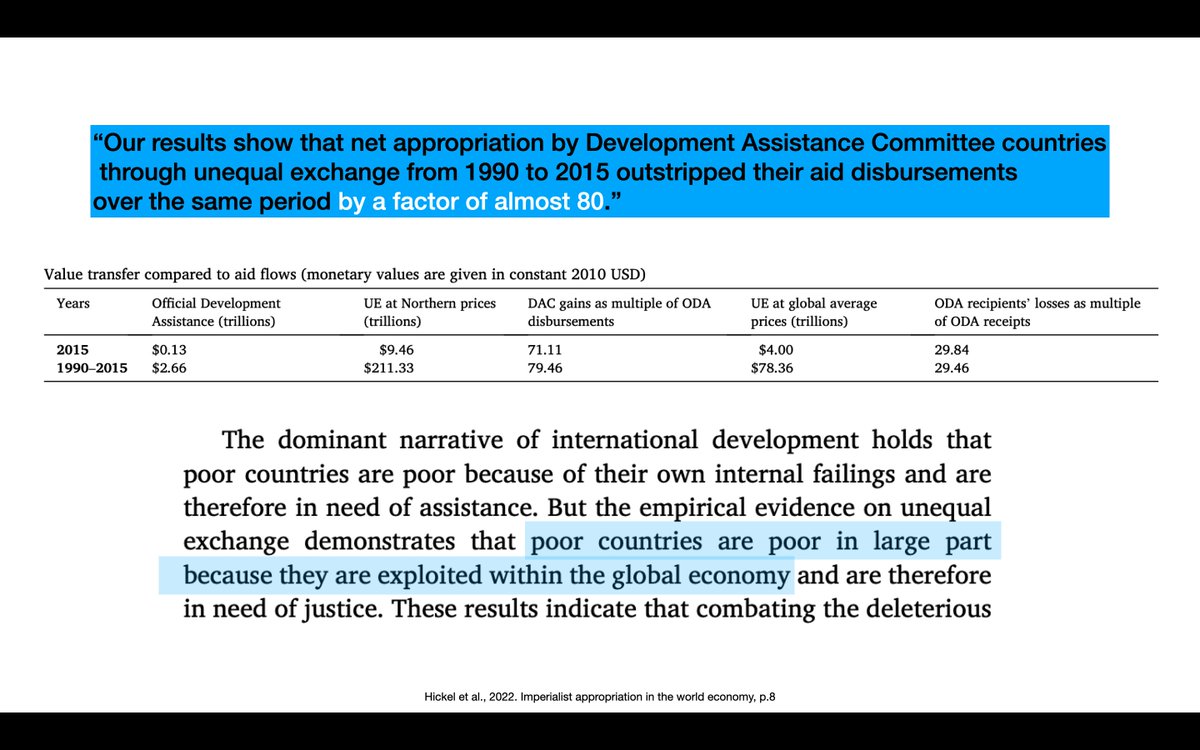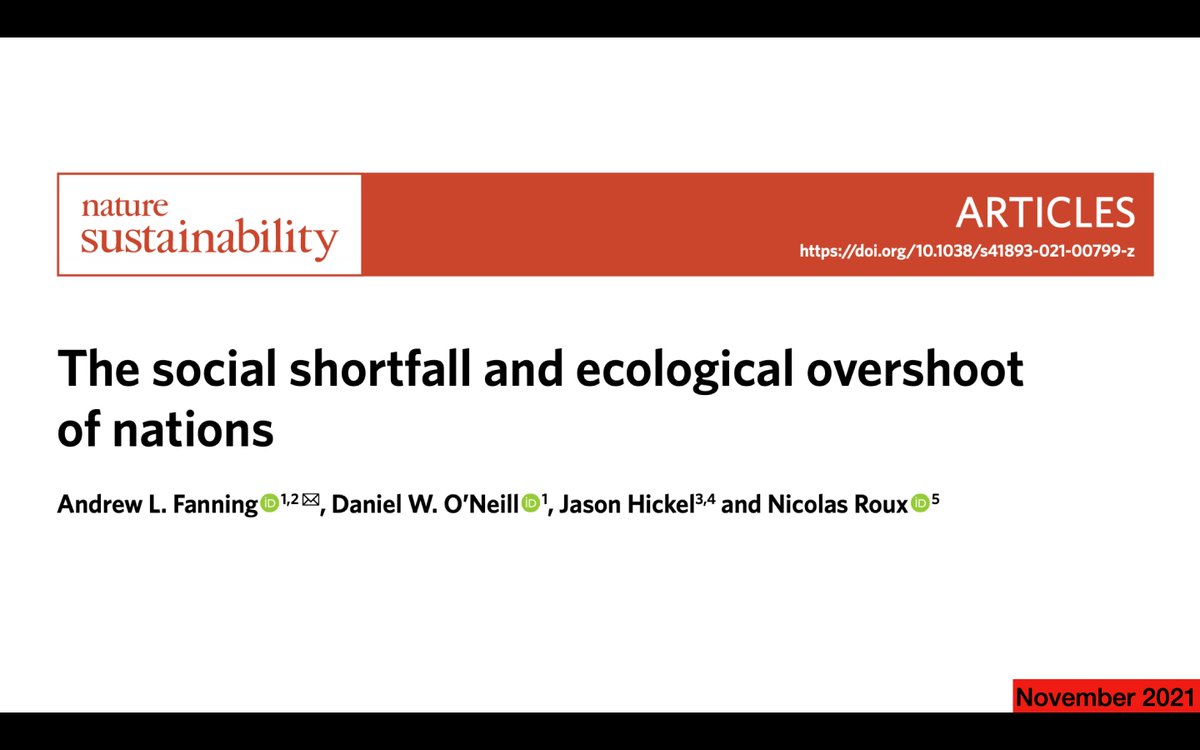
Another spectacular empirical study on unequal exchange by @jasonhickel, @C_Dorninger, Hanspeter Wieland, and Intan Suwandi.
🧵
🧵

The article is looking for evidence of something called "unequal exchange." (For more: compass.onlinelibrary.wiley.com/doi/abs/10.111…) 

Finding: there is a net flow of resources from the global South to the global North. For example, for every unit of labour that the South imports from the North, they have to export on average 13 units to pay for it. 

In the year 2015, the North's net appropriation from the South totalled 12 billion tons of materials, 822 million hectares of land, 21 exajoules of energy, and 392 billion hours of work. 

So the North gets free resources, uses it, and then exports damages, for example by warming the climate (more than 90% of the costs of climate change are suffered by the South). 

Time to put some money figures on this appropriation. In 2015, the North appropriated $10.8 trillion of resources from the South. (The cumulated amount over the whole period is $242 trillion.) 

Another way to look at it (this time with 'global prices' instead of 'Northern prices'), but same pattern: the North imports cheap and exports dear. 

If you foreign aid will eradicate poverty? Think again. For every dollar of aid that donors give, they appropriate resources worth $80 through unequal exchange. 

This is one of three recent papers on the topic. Here are summary threads for the two others.
1)
2)
And the link to the paper:
sciencedirect.com/science/articl…!
1)
https://twitter.com/timparrique/status/1483711973149884418?s=20
2)
https://twitter.com/timparrique/status/1485531965218603010?s=20&t=wobNCqOzCIQg11VVZ67ALw
And the link to the paper:
sciencedirect.com/science/articl…!
• • •
Missing some Tweet in this thread? You can try to
force a refresh























